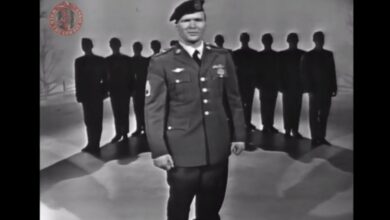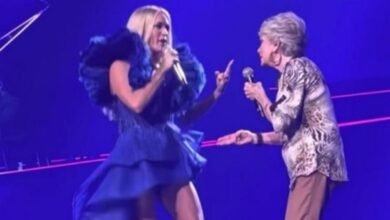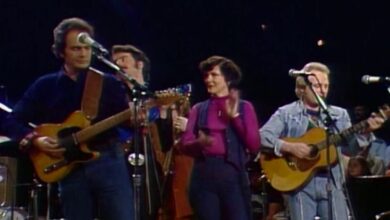Can you recall this iconic 50s dance? Let’s bring back those vintage moves!
In February 1958, a dance craze emerged in American high school gyms and sock hops, capturing the vibrant spirit of youth and embodying the carefree vibe of early rock ‘n’ roll. This dance was known as “The Stroll,” a line dance that quickly became a hallmark of teenage social events. Originating in African American communities, The Stroll rapidly gained widespread popularity, largely thanks to television exposure, especially on Dick Clark’s “American Bandstand.” As teens across the country watched and mimicked the moves, the dance became a symbol of youthful joy and spontaneity, fostering a sense of community that was both accessible and infectious.
The Stroll transcended being just a dance; it was a cultural landmark that reflected the social dynamics of the 1950s. Its structure was straightforward yet effective: two lines of dancers faced one another, creating a narrow pathway for individual expression while promoting unity. Couples took turns strutting down the center, showcasing their unique styles within the dance’s shared framework. This combination of personal flair and collective enjoyment resonated with teenagers eager to explore their identities in a rapidly changing society.
Accompanying this dance was “The Stroll,” a song by the Canadian vocal group The Diamonds. Known for their smooth harmonies and catchy doo-wop sound, The Diamonds played a crucial role in the dance’s popularity. Their rendition of “The Stroll” became an anthem for a generation, capturing the exhilaration and rebellious spirit of the 1950s. Lead singer Dave Somerville’s rich baritone was particularly captivating, guiding dancers with his melodic voice and infectious energy, making it hard to resist joining in the celebration.
As its popularity surged, The Stroll became a fixture at school dances and social functions across the nation. Unlike many trends of the era, The Stroll helped bridge racial and social gaps in a time of significant segregation in America. Its easy-to-follow steps made it inclusive and approachable, drawing teenagers eager to participate in this cultural moment. Dressed in their best attire, they filled dance floors with a sense of confidence and optimism reflective of post-war America. Thus, The Stroll not only provided fun but also served as a crucial social commentary on changing attitudes toward race, leisure, and community.
The meteoric rise of The Stroll symbolized a generation’s desire for self-expression and newfound freedoms. Its presence in music and television solidified the dance’s importance in American pop culture, creating lasting memories for countless young people. Each performance evolved into a communal celebration that echoed the collective experiences of youth during a time when music and dance served as essential outlets for self-expression and identity formation. It became a ritual full of emotional connections and joy.
In hindsight, the rise of The Stroll reflects a broader shift within American culture toward greater expression and inclusivity. The influence of African American traditions on rock ‘n’ roll was increasingly recognized alongside the growing momentum of the civil rights movement. Through dances like The Stroll, young people participated in a deeper conversation about community, identity, and societal change.
The Diamonds, influenced by the decade’s doo-wop sound, significantly shaped the growth of this musical genre. Formed in the early 1950s, they quickly gained fame for their engaging performances and harmonious melodies. Their relatable themes of love and joy resonated with youth, securing their status in popular music and allowing them to authentically represent the spirit of The Stroll and its cultural implications.
The significance of The Stroll has evolved over time but remains relevant today, often resurfacing in nostalgia-themed gatherings and events. The dance serves as a reminder of the joy and community that music and dance can foster. The essence of youthful energy and shared experiences continues to resonate, enabling new generations to connect with this cultural moment in celebration.
Media, particularly television and music, played crucial roles in transforming The Stroll into a landmark of American history. It captured the excitement and social changes of the late 1950s, representing more than just an enjoyable pastime; it mirrored broader cultural shifts reflecting the increasing desire for inclusion and expression that would characterize future social movements. The interplay of music and dance during this time laid the foundation for generations to engage in creative self-expression, forging connections with their peers on dance floors across the nation.
The story of The Stroll endures as a testament to the lasting power of music and dance to unite and inspire. It encapsulates a culturally significant moment, inviting reflection on the ability of art forms to bridge divides and foster community. The Stroll symbolizes an era when a passion for dance and music transcended societal boundaries, celebrating a shared human experience that continues to resonate in the collective memory of American culture.





